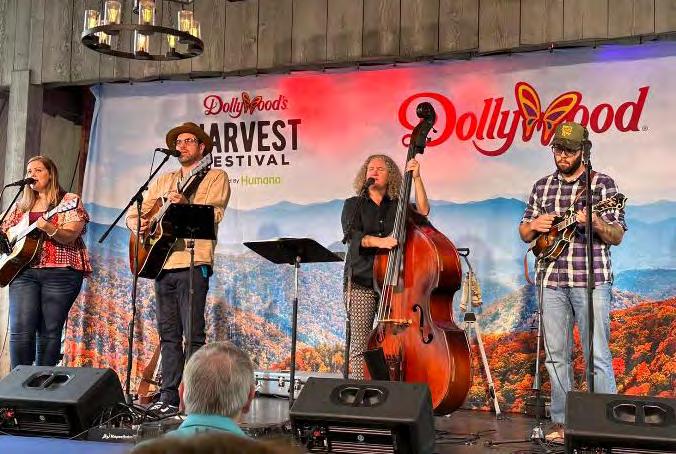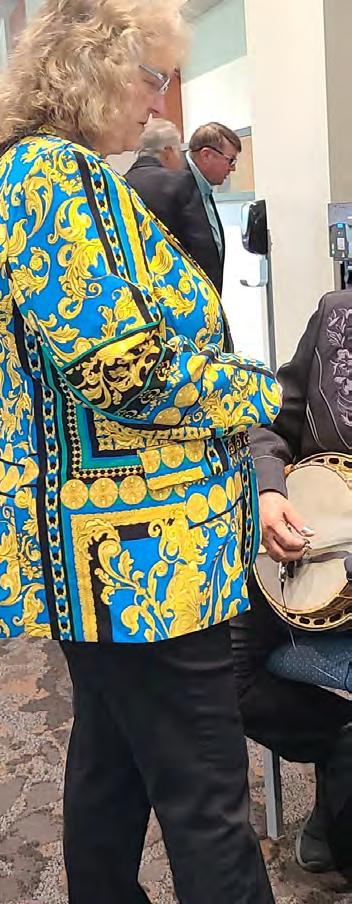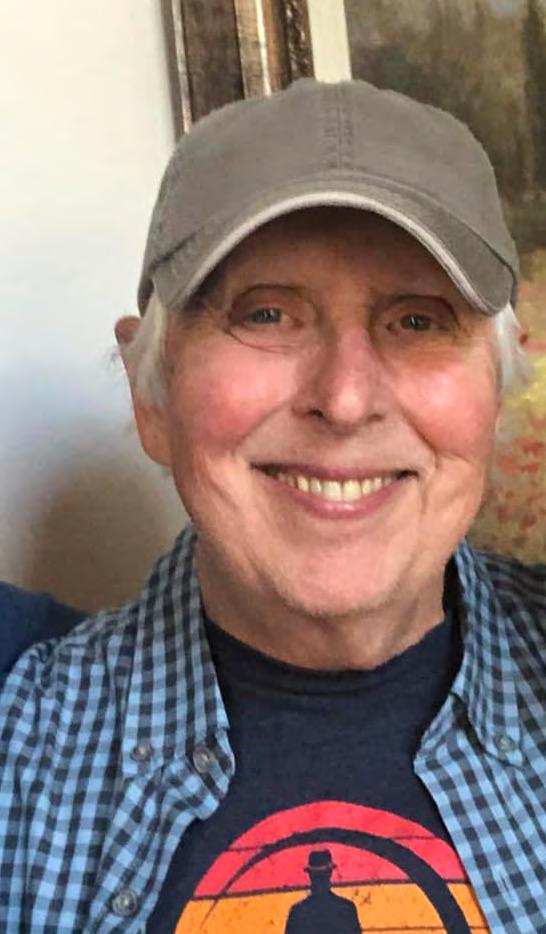























The Bluegrass Standard is a life-long dream of Keith Barnacastle, who grew up in Meridian, Mississippi. For three years, Keith brought the Suits, Boots and Bluegrass Festival to Meridian. Now, with the Bluegrass Standard, Keith’s enthusiasm for the music, and his vision of its future, reaches a nationwide audience every month! Keith@TheBluegrassStandard.com

Richelle Putnam is a Mississippi Arts Commission (MAC) Teaching Artist/Roster Artist (Literary), a Mississippi Humanities Speaker, and a 2014 MAC Literary Arts Fellowship recipient. Her non-fiction books include Lauderdale County, Mississippi; a Brief History, Legendary Locals of Meridian, Mississippi and Mississippi and the Great Depression. Richelle@TheBluegrassStandard.com
Speer • Creative Director

Rebekah Speer has nearly twenty years in the music industry in Nashville, TN. She creates a unique “look” for every issue of The Bluegrass Standard, and enjoys learning about each artist. In addition to her creative work with The Bluegrass Standard, Rebekah also provides graphic design and technical support to a variety of clients.

Susan traveled with a mixed ensemble at Trevecca Nazarene college as PR for the college. From there she moved on to working at Sony Music Nashville for 17 years in several compacities then transitioning on to the Nashville Songwritrers Association International (NSAI) where she was Sponsorship Director. The next step of her musical journey was to open her own business where she secured sponsorships for various events or companies in which the IBMA /World of Bluegrass was one of her clients.


Shelby Campbell is a writer and designer whose heart beats for creativity. A native of rural Livingston, AL, she found her passion in journalism and design at The University of West Alabama, where she received a Bachelor’s degree in Integrated Marketing Communications. Shelby also has her own photography business.


Susan Marquez is a freelance writer based in Madison, Mississippi and a Mississippi Arts Commission Roster Artist. After a 20+ year career in advertising and marketing, she began a professional writing career in 2001. Since that time she has written over 2000 articles which have been published in magazines, newspapers, business journals, trade publications.

Kara Martinez Bachman is an author, editor and journalist. Her music and culture reporting has appeared in dozens of publications and she’s interviewed many performers over the years, from local musicians to well-known celebrities. She’s a native of New Orleans and lives just outside the city with her husband, two kids, and two silly mutts.
Candace Nelson is a marketing professional living in Charleston, West Virginia. She is the author of the book “The West Virginia Pepperoni Roll.” In her free time, Nelson travels and blogs about Appalachian food culture at CandaceLately.com. Find her on Twitter at @Candace07 or email CandaceRNelson@gmail.com.

When everything stopped in the spring of 2020, musicians found a way to play their music, write new songs, and learn new instruments during this time of uncertainty. Some, like John Martin, picked up an instrument for the first time.
“I hadn’t really played music before COVID,” Martin said. “But I enjoy playing music now and strive to play new things and experiment with new instruments.”
First teaching himself to play the guitar with Wagon Wheel by country musician Darius Rucker, Martin quickly found himself drawn more to bluegrass music because of his hometown’s rich history.
The 15-year-old bluegrass musician from Mount Airy, North Carolina, grew up in a musical family singing in church with his mother and sister. Mount Airy is not just like any other small town. It was home to one of America’s most beloved television series, the Andy Griffith Show. Mayberry’s Music Center on Main Street feels like it could have been featured in the famous tv show decades before. Bluegrass music is embedded into everyday life, encouraging everyone to pick
up an instrument and jam. There is also a rich history of bluegrass musicians jamming on every corner.
“Mount Airy, North Carolina, is home to the Easter Brother’s music store on Main Street and is home to many bluegrass jammers. This had a pretty great impact on my drive to play bluegrass music,” Martin said. “My cousin also started dating a bass player for a bluegrass band, and my drive and interest in playing bluegrass became much more strong. He taught me some simple beginner bluegrass chords on the guitar, and I taught myself from there on.”
As a new bluegrass artist, Martin is just getting his feet wet in the world of performing. Still, he has earned the opportunity to perform on Main Street in Mount Airy, and he plans to perform locally more as he continues pursuing music.
“I’ve only had the opportunity to perform live once so far, but I loved it and didn’t have one nerve in my body. So, I’d say that it went fairly well!” Martin said.

In his two and a half years playing music, Martin has touched on playing multiple instruments, from guitar to bass and banjo. Influenced in his style of music by Tony Rice on guitar, Ben Marshall on bass, and Earl Scruggs, Sammy Shelor, and James McDowell on banjo, Martin feels that he takes styles he admires with each of these musicians to create a style of singing and to perform all his own.
“I sound a little different than other bluegrass musicians due to my singing runs. I tweak songs to fit my voice style, and I sing more modern,” said Martin.
As a new bluegrass artist, Martin only recently joined the young bluegrass musician group Tomorrow’s Bluegrass Stars after connecting with former member and new TBS leader Mary Parker.

While he hasn’t had the opportunity to meet any of the TBS leaders or members, he is very passionate about what the organization stands for and its mission to create the leaders in the bluegrass music of tomorrow.
“It’s important for upcoming bluegrass musicians to keep playing and carrying bluegrass on for the next generations to hear. We are a dying breed, but it is crucial that we introduce other young people to bluegrass!”
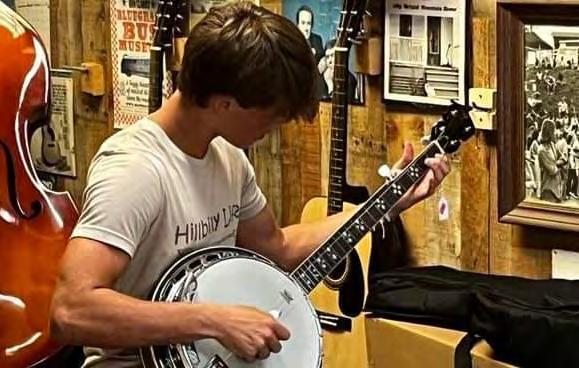
Martin said.
As he works toward more local performances and bluegrass conventions, Martin shares his music with the world through singing at church and on his Tiktok, Instagram, and Facebook pages.
While only 15 years old, John Martin has the potential to be a truly great musician as he grows in both talent and passion in the days and years to come.
“I have such a deep passion for music,” Martin said. “My love for music is everlasting.”

From as early as she can remember, California native Jenni Charles listened to bluegrass and country music while performing with her family band in the Bay Area. As she got older, she appreciated the camaraderie of playing music. By the time she got to college, she had played independently and wanted to expand into jamming with others, which provided a space for Jenni to find herself as a musician.
“The California bluegrass scene allows you to find these pockets of like-thinkers, and that instantly bonds you,” Charles said.
Charles’ life changed in 2009 when she met Jesse Dunn at a music festival. He became her bandmate and husband. “We were in different bands at the time,” Charles said. “After each of us had members of our bands who wanted to do their own thing, five of us from Jesse’s band and mine came together to start a new band.”
The band officially started in 2010 with a catalog of songs they wanted to record, and by June, they had recorded an album and hit the road. With Charles on fiddle, and Dunn, on

acoustic and electric guitar, they were joined by Dave Lockhart on upright and electric bass, Nick Swimley on lead telecaster guitar, and Brendan Smith on drums to round out their sound as the progressive Americana band Dead Winter Carpenters.
Like Sam Bush and Jack White, their genre-bending music didn’t fence them into a particular style. “We started as more of a bluegrass band but have started leaning more toward Americana and rock music. We still do covers of bluegrass songs, but on the West Coast, the bluegrass sound is less traditional. It’s beautiful. It’s constantly changing. We leaned on that and started playing that way, using bluegrass elements in rhythm and style,” Charles said.
Alongside his wife and other band members, Dunn is a skilled songwriter who has been creating impactful and thought-provoking music for the band for over a decade. “Jesse does about 95% of our songwriting,” Charles said. “It’s definitely reflective of our lives and personal experiences. He even wrote a song about our daughter titled “Lift Me Up.” All of our songs are someone’s true
stories, we like to say.”
After two and a half years since their last release, Dead Winter Carpenters is getting ready to head back into the studio to record their next album with a planned release for next year. The band’s previous recordings include their self-titled debut album, 2012’s Ain’t It Strange, 2014’s Dirt Nap, and 2016’s Washoe. The band’s progressive nature shines through loud and clear in the band’s most recent release, an EP titled Sinners n’ Freaks, released in April 2020. The band initially planned to tour with this EP and record a live fulllength album on the road, but COVID-19 altered their plans.

Performances take them all over the country for small, intimate venues, huge shows, and notable festivals like Harvest Music Festival, Strawberry Music Festival, Northwest String Summit, and Del Fest. They have shared stages with artists like Jason Isbell and Greensky Bluegrass.
“Playing The Fillmore was the highlight of my life,” Charles said. “That’s the place I went as a kid where I decided I wanted to play
music. Being on the same stage 20 years later doing what I love was magical for me.”
When creating music, Dead Winter Carpenters has found that they don’t need to adhere to a traditional style of music unless that is your goal. “We focus on keeping it light and fun,” Charles said. “The main goal is to enjoy each other’s company. Some say we are bluegrass, and some say rock, but we are just trying to have fun.”
While Charles and Dunn initially came together over their love for Neil Young, today’s band is influenced more by artists who take traditional roots and put their twist on it, such as Tyler Childers, Nicholas Jameson, and Billy Strings.
As a genre-crossing band, Dead Winter Carpenters takes value in the element that the fiddle brings to their music.
“You don’t need a fiddle unless you are playing country, western, or bluegrass music. Even with playing a fast bluegrass rock’ n’ roll, the fiddle brings more of a bluegrass element. It makes soft songs softer and
brings something different to the mix,” Charles said.

As the Dead Winter Carpenters move toward the future with their upcoming tour dates and album world.
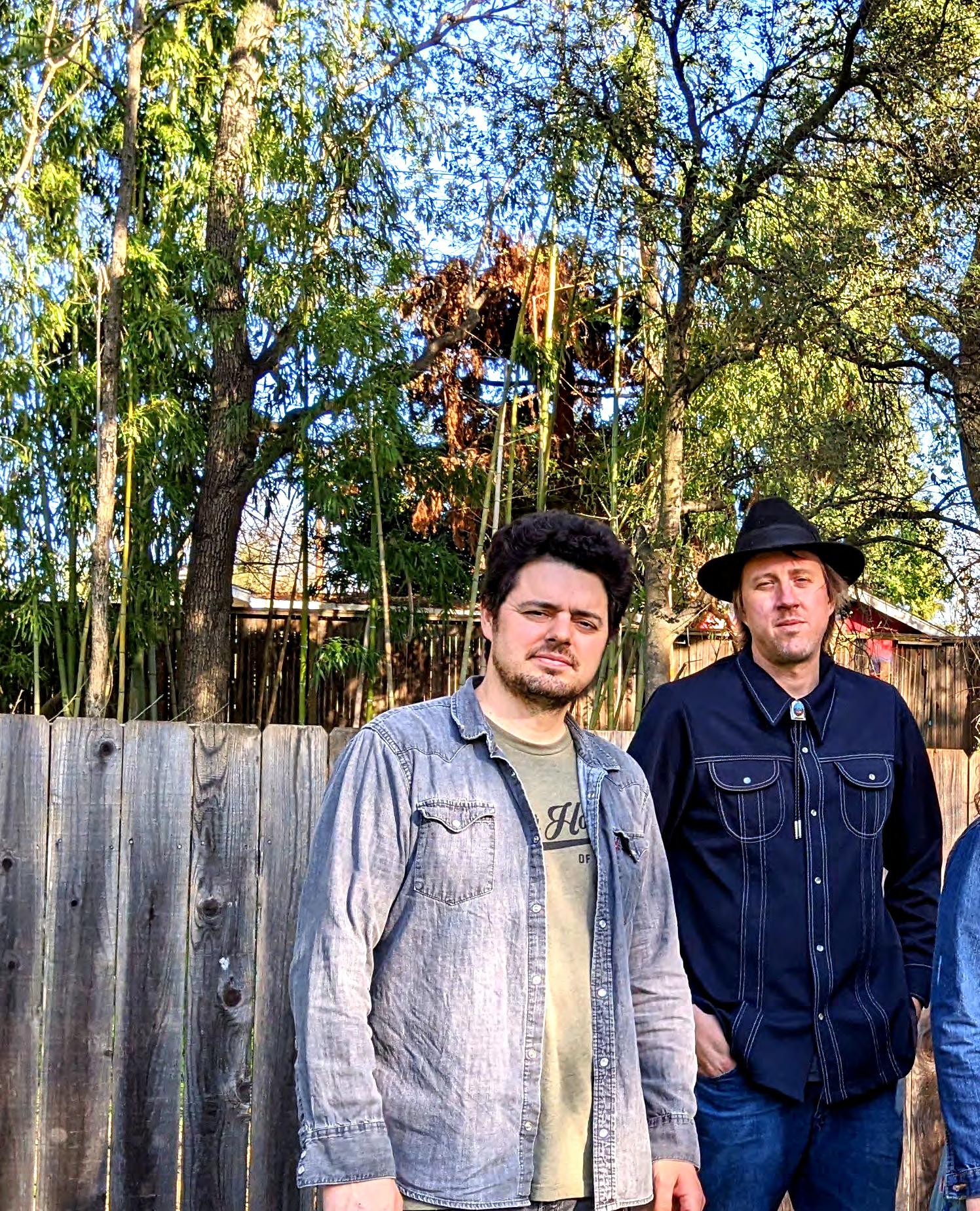
“We want to keep making music for ourselves and bring people joy,” Charles said. “We want to tour things for us. Our long-term goal is to continue to tour and make music people enjoy.” The most floor “to forget their woes and be happy in the moment.”
- “We always do a big New Year’s show and look at December and holiday traditions as food with a big jam session. Every holiday, we gather around the piano to sing songs. That is the best thing about music and gathering together to play music. Playing together is always so special.”
album recordings, they reflect on the importance of what they do and why they share it with the

tour as much as makes sense for everyone. The pandemic and coming out of that changed most rewarding part, she said, was “purely making people happy”… to get them onto the dance

Nathan Gates was born into the world of Gospel bluegrass. As one of seven children of the Gates Family band, Nathan traveled in a converted school bus with his family. “We traveled with a tent evangelist out of Arkansas. He taught Sunday school, and we would provide music for the meeting.”
Nathan’s dad, Craig Gates, put a mandolin in young Nathan’s hands when he was nine. While the mandolin was a perfect size, the banjo was a perfect fit. He fell in love with the instrument and became quite proficient at playing it.
As the Gates children grew up, Nathan’s sisters married and lost interest in touring with the family band, choosing instead to stay home and raise families. In 2012, Nathan decided to form a new band. He enlisted his father and Robert (Bob) Hauser, a classical cello and bass player who has been a professional church musician throughout Illinois, Indiana, and Wisconsin for over thirty years. He also performed with orchestras, operas, theatre groups, and weddings and even had a short stint in an early-Elvis-era rock band.
Bob’s daughter, Kemedy, joined the group playing fiddle. The youngest in the group at 17, Kemedy started her music studies at age six, taking cello lessons from her dad. She took up the fiddle when she was ten and began sitting in on bluegrass jams at a local guitar shop.

Craig Gates plays guitar with the band and provides solid vocals. He began traveling with college choirs in his early twenties. After getting married and having children, he started a family ministry, traveling and singing Gospel music at churches, camp meetings, and county fairs. Nathan says his dad, now 71, wants to tour until he can’t do it anymore. “He says this is what God wants him to do.”

Nathan describes the band as a coming together of two families. Based in Bloomington, Illinois, Nathan owns a construction company and does electrical work. But on many weekends, the band hits the road to perform. “We load up the kids and take them on the road with us,” says Nathan. We have traveled all over the Midwest and south as far as Tennessee, North Carolina, South Carolina, Georgia, and Florida.” Nathan says his wife, Rachel, was never really involved in music other than participating in her church’s praise and worship team. “She moved here from Connecticut to go to school. She studied Agricultural Education and got a degree in teaching. She helps behind the scenes but has also stepped up on both mandolin and vocals.” Rachel also plays a vital role within the family. “We just had our third child, who is five weeks old. That gives us three under three, which keeps her busy.”
Their hard work and dedication have paid off in the form of recognition by the Rural
Roots Music Commission. In 2018 New Legacy’s Simple Truth album was named Acoustic Bluegrass Album of the Year, and in 2019 they received the Gospel Bluegrass Album of the Year for their album, One Day at a Time. “I never thought of chasing accolades,” says Nathan. “But getting those awards gave us credibility as a band. We were thankful for the honors.” In addition to those two albums, New Legacy has also released Light the Way, a full LP with 13 cuts, and their Christmas album, A Christmas Collective.
Like many other bands, New Legacy struggled with what they would do when Covid shut down festivals and shows. “We had been producing The New Legacy Show, a music variety show on YouTube. We got seven episodes completed before Covid shut it down. But those shows helped keep us top of mind with folks for a while. We loved doing them, and we want to do more shows.”
Nathan describes himself as a “goof” on stage. “I like pranks, and because I stand next to Kemedy on stage, the juvenile side of me comes out. We enjoy playing around with each other, all in good-natured fun. Bob also enjoys a good cutting up. My dad loves to tell corny jokes, so we all have a really fun time on stage. I think that engagement with the audience helps to tear down walls, and the music and the message are better received.” One thing Nathan knows not to do is to startle his wife. “She does not like to be startled, and I respect that.”
The sound of New Legacy is rich and full. “One of my favorite songs to perform is “The Middleman” from our One Day at a Time album. It has a full orchestration arranged by Bob, and the music sounds full and lush. We stacked parts, and it sounded like a full string section. That’s the kind of sound we try to provide on stage at our shows, and I think our audiences appreciate it.”
Link to website: New Legacy Music | Bluegrass | Gospel | Bloomington Link to an episode of The New Legacy Show: (3) THE NEW LEGACY SHOW S1.E4. “FAMILY” - YouTube



At one time, washday meant pulling out your trusted washboard and scrubbing clothes on the ridges before rinsing and hanging them to dry. A washboard was a utilitarian item, certainly nothing to get excited about. But somewhere along the way, someone ran their fingers up and down those ridges and realized it made a sound that worked well with music. Add some thimbles to your fingertips; the sound it creates is ideal for percussion. Lucho Pellegrini comes from a musical family in Argentina. His mother taught piano, and Lucho was a percussionist. He sought out the washboard as an instrument, and he wanted to incorporate that into his music. He found one, but it was falling apart. His cousin, Rodrigo, is an engineer, so Lucho asked Rodrigo to re-engineer and improve the washboard for him to use as a musical instrument. “They started iterating and came up with what became Cincinnati Washboards,” says Tim Zenderman, who markets the washboards in the United States. “Their intention was clear from the beginning. They wanted to create an appealing washboard built for musicians. They wanted to use sustainable materials, so they decided upon Paulownia, a tree in northern Argentina that


grows rapidly.”
The name “Cincinnati” is an homage to Ohio, the location of two large washboard manufacturers. “Ohio is where National and Columbus washboards are made,” says Tim, “and Cincinnati is a big city in Ohio, so Lucho named his company Cincinnati Washboards.” In 2016, the company launched in Argentina and sold its products online. The washboards sold out almost as fast as Lucho and Rodrigo could make them. “Each of the washboards is hand-crafted.”


Tim connected with the company when a mutual friend and fellow musician introduced them. “I lived in Argentina for eight years,” Tim says. “I used to follow Lucho’s band, and I actually played ukulele with some of his bandmates. I went to see his band with my girlfriend at the time (now my wife), and Lucho was playing the washboard. We loved that.”
Tim’s family manufactures wind instruments. Their company, Jean Paul USA, started ten years ago. “Prior to starting his company, my dad had been a distributor for other musical brands, including Fender, Gipson, Roland, and Yamaha. I got into this space of marketing just before the pandemic. I was working on growing the brand, and I got a lot of experience helping that company grow. A mutual friend introduced me to Lucho. He wanted to expand his business into the United States. At the time, washboards were not a ‘thing,’ but Lucho’s perspective is that it is an instrument with jam blocks and cymbals that make it super customizable, and it fits in a backpack. That is mind-blowing for percussionists. Those who know the washboard usually associate it with Appalachian music or something out of New Orleans, like Dixieland jazz, Cajun, or zydeco music. But the reality is that you can play the washboard with any kind of music, and it works incredibly well in so many different spaces where percussion isn’t even really a thing, like in bluegrass, but because the washboard is much more discreet than a full drum set. It can work alongside, like an acoustic instrument, in harmony. I think it’s like such a cool instrument.”
Tim points out many reasons to prefer a washboard over a big drum set. “The first, of course, is a drum set takes up a lot of space, whereas the washboard can be tucked away in
a small case. Drum sets are difficult to travel with, while the washboard is lightweight and easy to carry. It’s basically a drum set you can carry in a backpack.” And of course, a huge advantage the washboard has over a drum set is the cost. A small washboard starts at just $199. The “rusted” model is more expensive, coming in at $299 for the small version. “The washboards come with a galvanized or rusted finish,” explains Tim. “The instruments are played by tapping and dragging your fingers over the ridges. Our rusted finish gives a ‘darker’ sound. Players can drag along the ridges for a fuller sound texture. That has never been done with washboards before. It’s a Cincinnati first.”

Learning how to play the washboard is easy. A free “get started” video is on the company’s website, www.cincinnatiwashboards.com. “We are working on a good course that will get people started playing like a pro,” says Tim.

Once you’ve mastered the washboard, you may want to add more accessories. Cincinnati Washboards offers cowbells, cymbals, and jam blocks. “The jam blocks have been very popular in the United States,” says Tim. “They are really unique.” The washboards come complete with a cowbell, shoulder strap, thimbles, and carrying case. “Because we are celebrating our entry into the U.S. market, we are offering special deals for the holidays,” says Tim. “Cincinnati Washboards can be shipped all over the world.”
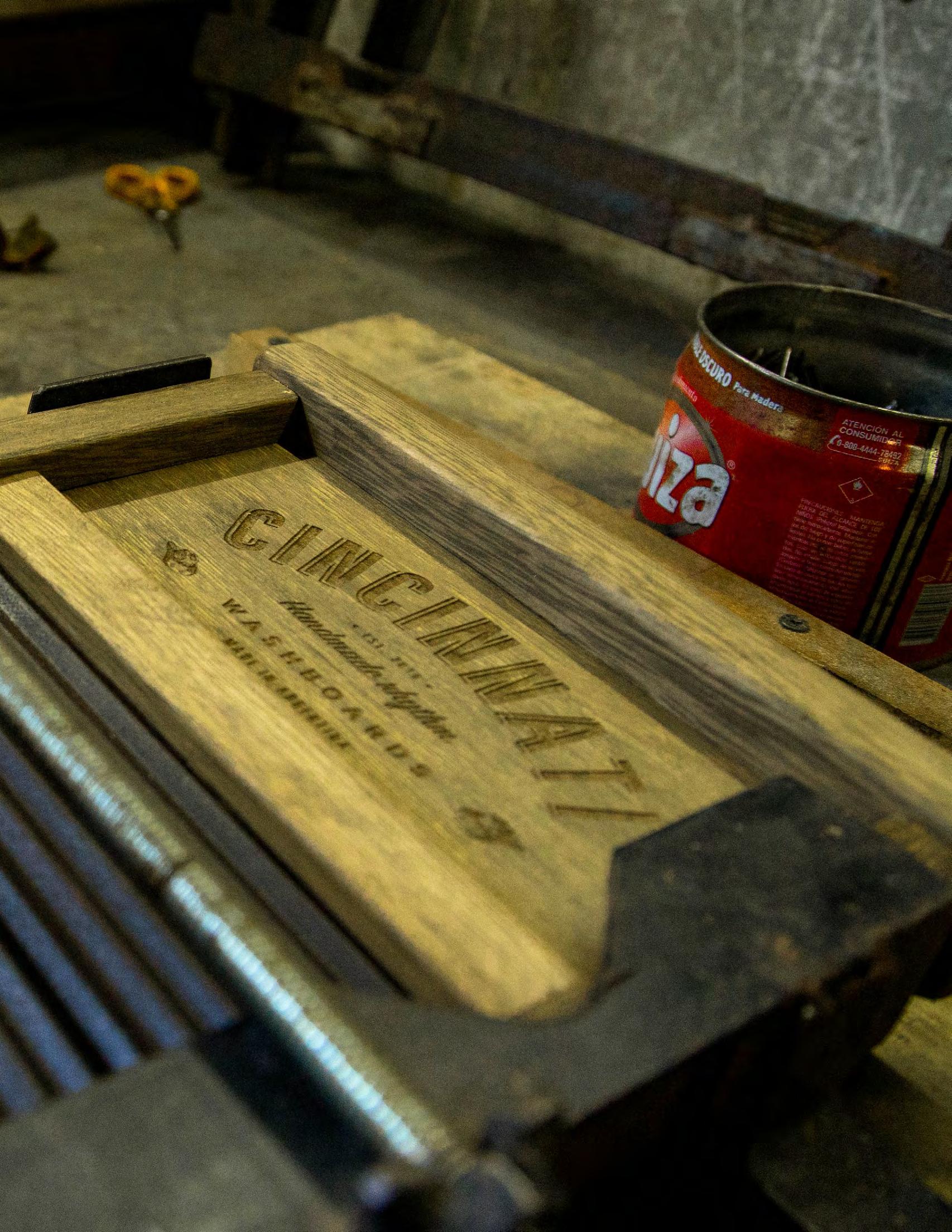
These days, making a living in the music industry can be a challenge, especially for songwriters and composers. Thankfully, there has been a change in U.S. copyright law. The Music Modernization Act of 2018 spurred the formation of a non-profit organization based in Nashville that helps songwriters and composers get the mechanical royalties they are due for certain types of digital uses of music in the United States.
The Mechanical Licensing Collective (The MLC) collects and distributes royalties directly to the songwriter or composer or through a publisher or an administrator who collects on their behalf. “The Music Modernization Act changed the way digital mechanical

licensing in the United States is done,” says Serona Elton, head of The MLC’s Educational Partnerships. “It mandated the creation of a mechanical licensing collective and set the rules about what it does and how it does it.” Serona is also a full-time professor at the University of Miami Frost School of Music, where she is the director of the Music Industry program. She explains some important, sometimes confusing, differences between what The MLC does and what ASCAP and BMI do. “Those organizations collect and distribute performance royalties from uses worldwide. We are focused only on mechanical royalties from digital uses in the United States. We both sit on the song and
music publishing side of the business, not on the sound recording and artist side.” To collect royalties from The MLC, songwriters, and composers must be members of the collective or signed up with a publisher or publishing administrator, who will collect from The MLC on their behalf. “Either way, those royalties are going to run through The MLC,” says Serona. “So, they have to do one or the other, or else they are basically losing the royalty money.” She explains that when there is a stream of a recording on a service like Spotify or Apple Music, that one stream generates three different sets of revenue. One type of money is the public performance royalties for the use of the song that goes to ASCAP and BMI, which they then pay publishers and
writers. The second kind that people are familiar with is the revenue money that goes to the record label and the recording artist. The third type is mechanical royalty.
Not all kinds of streaming services generate mechanical royalties. “Digital mechanical royalties are generated by audio-only download services and interactive streaming services,” explains Serona. “An interactive service is different from a noninteractive service like digital radio, such as satellite radio or Pandora radio, where the listener can pick the channel or the station, but not exactly what they are going to listen to. On interactive services like Spotify and Apple Music, the listener gets to pick the specific track to listen to, and a stream on those services generates the three different
types of revenue.” Serona says that songwriters and composers have gotten much more business savvy over time about understanding PRO money. “Additionally, without having a deep understanding of the music business, most people intuitively know that recording artists and record labels are paid on streaming,” says Serona. “But less people understand that there is also a mechanical royalty generated, which flows from Spotify to The MLC and then from The MLC to the publisher or publishing administrator, who then pays the songwriter. If a songwriter is acting as their publisher because they have never signed with a publisher and don’t have a publishing administrator, then they need to join The MLC so we can pay them directly.” The MLC was formed due to

the change in the copyright law. “We are a very new organization but have done a lot of important work in a short amount of time,” states Serona. “The organization was first created in the summer of 2019. We spent 2020 building our staff, systems, processes, and member base so we would be ready for the new blanket license becoming available to the digital services on January 1, 2021. When the time came, we were ready to start receiving royalties and matching and paying them. In the year and a half since launching full operations, The MLC has met every milestone set by Congress in the Music Modernization Act and successfully distributed nearly $700 million in blanket royalties to our members.”
The response from songwriters and composers has been good and “really positive. I think we have improved their understanding of this complicated area of the business. It was very difficult to get a clear answer about how to collect this money before The MLC was formed. Now there is greater clarity thanks to our dedicated efforts to educate everyone about what The MLC is and what we do.”
For more information about The MLC, visit their website at www.themlc.com.
It seems the circle will remain unbroken, as a musician (and now writer) John McEuen, a founding member of The Nitty Gritty Dirt Band, has come full circle with a book about the making of what some call the most iconic album to come out of Nashville. Why did he write the book? “The fiftieth anniversary of the recording of Will the Circle Be Unbroken was coming up,” says John. “About eight years ago, my brother, Bill, gave me a treasure trove of photographs he had taken of the early Dirt Band. He took a lot of the photos at our recording sessions. He gave me about 150 photographs, many of which had never been seen. And the ones I had seen were only like a half-inch square on album and CD covers.”
But the idea of writing a book didn’t happen right away. Instead, John went to work putting together a multi-media stage show about the early Dirt Band, leading up to the Circle album. “It tells how that came about, with photos from the sessions I play in front of. I did both the writing and recording.” John says that during the recording sessions for the original album, there was always a recorder going to capture conversations in the studio. “For instance, on the Circle album is a recording of a Roy Acuff speech that says, ‘Let me tell you a little something about my policy in the studio.’ I have various photos that go back and forth between the
band members and Acuff while he says, ‘I figure we gotta get it right the first time and the hell with the rest of them.’ Then the song we were recording in the studio plays live on stage.”
John took the show on the road, but Covid stopped it for a while. “I only did about ten shows last year, and it has picked up this year.” He has presented the show about 120 times. “It’s always different, and it’s really fun. I love editing the film, and without realizing it, I was preparing for the book. I began seriously thinking about it when Ken Burns did his country music series. In episode six, he did a piece on Will the Circle Be Unbroken. When I did my interview for that, I thought, I’d better get this right.” The Circle project fell into place in a most unlikely way. John had just moved to Colorado and went to see Earl Scruggs play. He played for five days in Boulder, and then Doc Watson was scheduled to play in the same club the following week. “I had been taking Scruggs back to his hotel, and I asked him if maybe one day he would possibly record with The Nitty Gritty Dirt Band. He said he’d be proud to. I later asked Doc Watson, and he agreed as well. I called my brother Bill, a record producer and manager of the band and the photographer in the early days. Bill said he would call Merle Travis to see if he would play with us as well.



Merle
The project was recorded in Woodland Studios in East Nashville. Bill captured a video recording of the first meeting between Doc Watson and Merle Travis. Scruggs then got “Mother” Maybelle Carter to join them; Roy Acuff came on board, along with the Carter Family, Jimmy Martin, and Vassar Clements. Bill talked with the record company and told the label’s president about the music they played – bluegrass and occasional rock and country.” It was an opportunity to build bridges between generations and genres. With a $22,000 budget to make a whole album, plus pay for meals and hotels, they had to make the best of their five days scheduled in the studio. On the first day in the studio, they had four hours allotted to record three songs. They ended up recording four songs in an hour and a half. “Three of them were done on the first take,” John recalls.
The musicians sat in a circle facing each other, and the songs flowed naturally. From “You are My Flower” to “Soldier’s Joy,” each song was flawless. “It took maybe eight minutes to record ‘Soldier’s Joy,’” says John. “We got the sound up and running and said, ‘OK, let’s make one,’ and ten minutes later Watson and Earl both said, ‘I don’t think I made any mistakes,’ so that was it.”

A book publisher reached out to John last year and asked if he had any ideas for a book. “That’s when the idea for this book really came together. I had the photographs my brother gave me, and I had been working on the stage show I do on making the album, so the time was right.” Now in its third printing, Will the Circle Be Unbroken: The Making of a Landmark Album tells the story of the 1971 collaboration between The Nitty Gritty Dirt Band, a country-rock-jug band from Southern California, and a stellar lineup of legendary bluegrass musicians from Nashville. The book is beautifully illustrated and filled with an amazing array of never-before-seen photographs by William McEuen. Fifty years after the album’s recording, it remains one of the most iconic albums in American history. John’s book takes the reader inside that circle of musicians and shares the stories behind the songs, a circle that is yet unbroken.

said it would be a challenge, but he had always wanted to meet Doc Watson.”






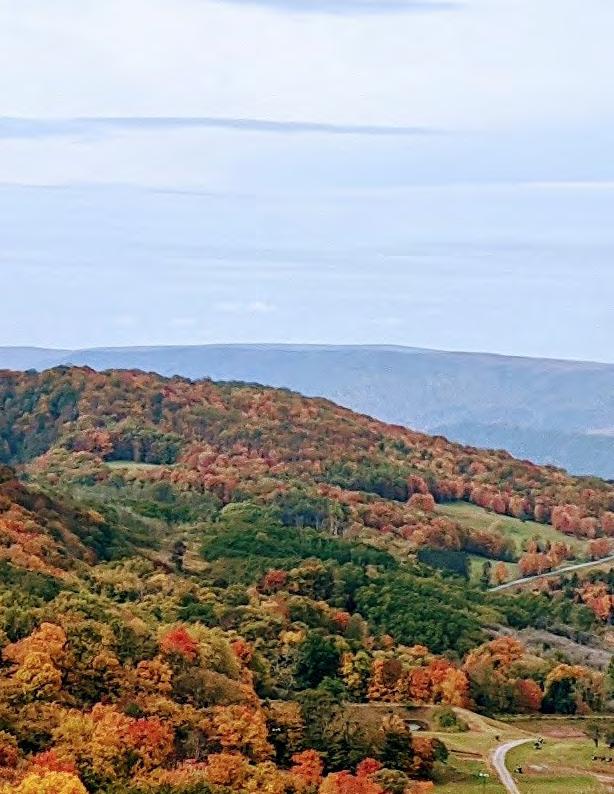
Many communities across Appalachia unite over a celebration of local foods in the form of fairs and festivals.
These annual events often have demonstrations, crafts, and tons of celebrated food or drink available to purchase.
Some of the most unique, delicious, and fun festivals from throughout the region are listed below. Which ones have you marked off your bucket list?
International Wine Festival Roanoke, Virginia
Celebrate the new year with a selection of award-winning wines from around the world. Sample more than 40 wines ranging from big, bold reds to clean, crisp whites and everything in between. In addition to the souvenir glass, patrons will enjoy paired hors d’oeuvres and live music.

Carolina Chocolate Festival Swansboro, North Carolina
Calling all chocolate lovers: This North Carolina festival can cure any sweet tooth. The festival raises funds for local charities while celebrating all things chocolate, including chocolatier vendors, a chocolate pudding contest, and a cocoa 5k run.


Highland County Maple Festival Monterey, Virginia
This county-wide festival celebrates all things maple. Tens of thousands of visitors can observe the process of maple syrup making and all the delicious products made from it: maple sugar, maple butter, maple donuts, and, of course, pancakes with maple syrup.


Irvine, Kentucky
This festival’s slogan, “where the Bluegrass kisses the mountains,” is reflected in its offerings: mushroom market, mushroom cooking demos, fungus 5K, arts & crafts, and mountain history. If you’re lucky, you may come home with some coveted morel mushrooms from the Mountain Mushroom Festival.

Harlan, Kentucky
Poke sallet is made up of cooked leaves of the poisonous pokeweed plant, making it a delicious - and edible - dish popular in the South. This Kentucky festival celebrates the dish with crafts, a car show, games, and more for a few days each June.
Asheville, North Carolina

Rather than one week-long event, the Chow Chow Asheville Food Festival takes place over a series of weekends throughout the summer. These weekends feature dinners, hands-on workshops, and conversations around topics that impact the local community.



Feast of the Ramson Richwood, West Virginia
The garlicky wild onion, known as a ramp, is celebrated each spring in Richwood, West Virginia, known as the ramp capital of the world. Festival-goers can enjoy a dinner of ramps, potatoes, brown beans, cornbread, ham and bacon, desserts, and Sassafras tea while local Appalachian music plays
Picklesburgh
Pittsburgh, Pennsylvania
In a celebration of all things pickled, Pittsburgh, Pennsylvania, shuts down one of its bridges to host Picklesburgh, which features a pickle juice drinking contest, pickle ice cream, pickle beer, and much more. It’s even been rated as USA Today’s #1 Specialty Food Festival.

Ohio PawPaw Festival Albany, Ohio
Celebrate one of America’s largest native tree fruits, the pawpaw, in Albany, Ohio. The pawpaw has a creamy, custardy texture and a tropical flavor; many describe it as a mix between a banana and mango. You can see for yourself by enjoying samples at the festival, workshops, eating contests, and art shows.

Berkeley Springs, West Virginia Head over to America’s first spa town to indulge in the delights of fall flavor. The Berkeley Springs Apple Butter Festival features giant copper kettles in the middle of town, and all attendees have an opportunity to take a stir. The festival kicks off with a morning parade and is followed up with a baked goods contest, dozens of vendors selling homemade apple butter, and live entertainment.
pecan pies, and the crowning of the new Alabama Pecan Festival Queen.
Winter Warmer Nashville, Tennessee
More than 35 breweries are displayed in Nashville during the Winter Warmer so patrons can sample everything from sours and seasonal to barrel-aged beers and barley wine. Plus, food trucks and entertainment will also be on tap.
There are many more festivals and fairs celebrating foods than those listed here. Whether you want to learn more about buckwheat cakes or barbecue, there is a festival - or two or three - to celebrate it.
Whether you say pee-can or puh-cahn, you’re welcome to Mobile, Alabama, to celebrate the brown nut every November. The pecan is the state nut, and festivities feature family-friendly entertainment, fresh pecans,



Plan your year ahead with this handy list and add your favorites for a full year of delicious food and drink across the region. And share your photos and stories as you explore the foods communities hold dear.




CD: Small Towns


Artist: Stillhouse Junkies
Label: Dark Shadow Recording Artist Website: www.stillhousejunkies.com Label Website: www.darkshadowrecording. com
By: Mississippi Chris SharpThis is my third time reviewing a CD for the Stillhouse Junkies. The first was in 2018 for their CD Over the Pass, on my own blog (Stillhouse Junkies - Over the Pass), then their CD Calamity in a 2020 issue of this magazine (Bluegrass Standard - Stillhouse Junkies – Calamity) before they won the IBMA award for 2021 Momentum Band of the Year. The Stillhouse Junkies have not rested on their laurels, continuing to give us new, fresh music, superbly performed.
This three-piece band, consisting of Fred Kosak, Alissa Wolf, and Cody Tinnin, is not traditional Bluegrass but something between it and a loose, banjo-less jam band. Three-piece bands, when they get in the pocket, manage to sound like a much bigger band. The Stillhouse Junkies sure manage to sound bigger than they are. Their synergy yields something much larger than their three-piece status would lead us to believe.
Every song on Small Towns is original, except for one surprising but not unwelcome, Lindsey Buckingham (Fleetwood Mac) tune. We are again presented with the wonderful, intriguing writing of Kosak, and this time also being offered selections from the pen of Tinnin and Wolf, whom both shine with their song contributions.
The songs are:
9. 1963 (Kosak)

10. Five doors down in Leadville (Tinnin)
11. On the House (Kosak)
12. Haskell Town (Tinnin)
I haven’t yet written a review of a CD I don’t like. Having limited myself to CDs I do like, picking a favorite song is typically difficult for me. I like every song presented on Small Towns, but my particular favorites are “Moonlight Over Ridgway,” “Evergreen,” “River of Lost Souls,” “Colorado Bound,” “El Camino,” “1963,” “Five Doors Down in Leadville,” and “Haskell Town.” That’s eight favorites out of twelve songs. There’s no point in picking a favorite when you like them all. What makes one song speak to someone more than another is so subjective. One line in a song may fasten itself to our memory, a fond or painful memory, and stick like jam, honey, and sorghum molasses to a recently busy breakfast table.

The Stillhouse Junkies have guest fiddler Becky Buller working some twin fiddle with Wolf on El Camino. Other than that, Kosak, Tinnin, and Wolf bring home the bacon all the way through. I particularly enjoyed Kosak’s work on the octave mandolin. Many times throughout the CD, a remarkable tension is added by Tinnin’s bass work and Wolf’s backup fiddle as the band works its way through Colorado’s small towns. If this CD has a theme suggested by the lyrics and music, it is travel to a destination...urgent travel to a destination. Maybe the destination is Small Towns. They graciously take us along on their journey to and through those small towns.
It’s a fine ride, too.
Mississippi Chris Sharp

CD: The Perfect Gift
Artist: Becky Buller
Label: Dark Shadow Recording

Artist Website: beckybuller.com Label Website: darkshadowrecording. com
The Perfect Gift comes just in time for Christmas. There’s lots of Christmas music. Some of it is classic and timeless. Some of it is tired and shopworn, like the baleful uh-woo-woo-woo-woos of “I’ll Have a Blue Christmas Without You.” I’ve heard enough uh-woo-woo-woo-woos in one lifetime. You on the other hand may have yet to get your fill.
Becky Buller and Dark Shadow Recording have presented us with a delightfully fresh and new all-star Christmas record. Nearly every song is new to me, and the traditional songs are arranged in new ways, a joy to the ears.

Joining Buller are Rhonda Vincent, The Fairfield Four, Tim O’Brien, Vince Gill, Sharon White, Sierra Hull, Ricky Skaggs, Ron Block, Dan Tyminski, among others. Buller shares a songwriting credit on six of the eleven songs here, all done with bluegrass instrumentation, not rushed, not dragging, just perfect: The perfect CD to pop in the stereo as you decorate, wrap presents, and prepare the food for a Christmas feast with your family and friends.
My favorites are Buller’s fresh arrangement of “Oh Come Oh Come Emmanuel,” which she duets with Tim O’Brien; “Mary Rocked Her Baby” with The Fairfield Four; the Fanny Crosby classic hymn, “Tell Me The Story Of Jesus,” with Vince Gill and Ricky Skaggs; and Buller’s composition, “The Box.” Every song is listenable, repeatedly. As soon as my wife hears this, I’ll lose it to her car.
Salute to Becky Buller and all the guest artists for delivering a performance, not an execution. And salute to Stephen Mougin on the recording and mixing, and to David Glasser on the mastering. I cranked this up at high volume on my studio monitors to see if the recordings were as clean as they seemed piped through a vintage Marantz amp and various vintage loudspeakers. They are. I truly love the
transparent, clean sound of a good recording. To hear the crisp highs and mids with no hint of harshness, and the punchy bass that soothes but not rattles is always a pleasure.

I am sold. Merry Christmas, everyone. Thanks to Becky Buller, I’ve got The Perfect Gift.






